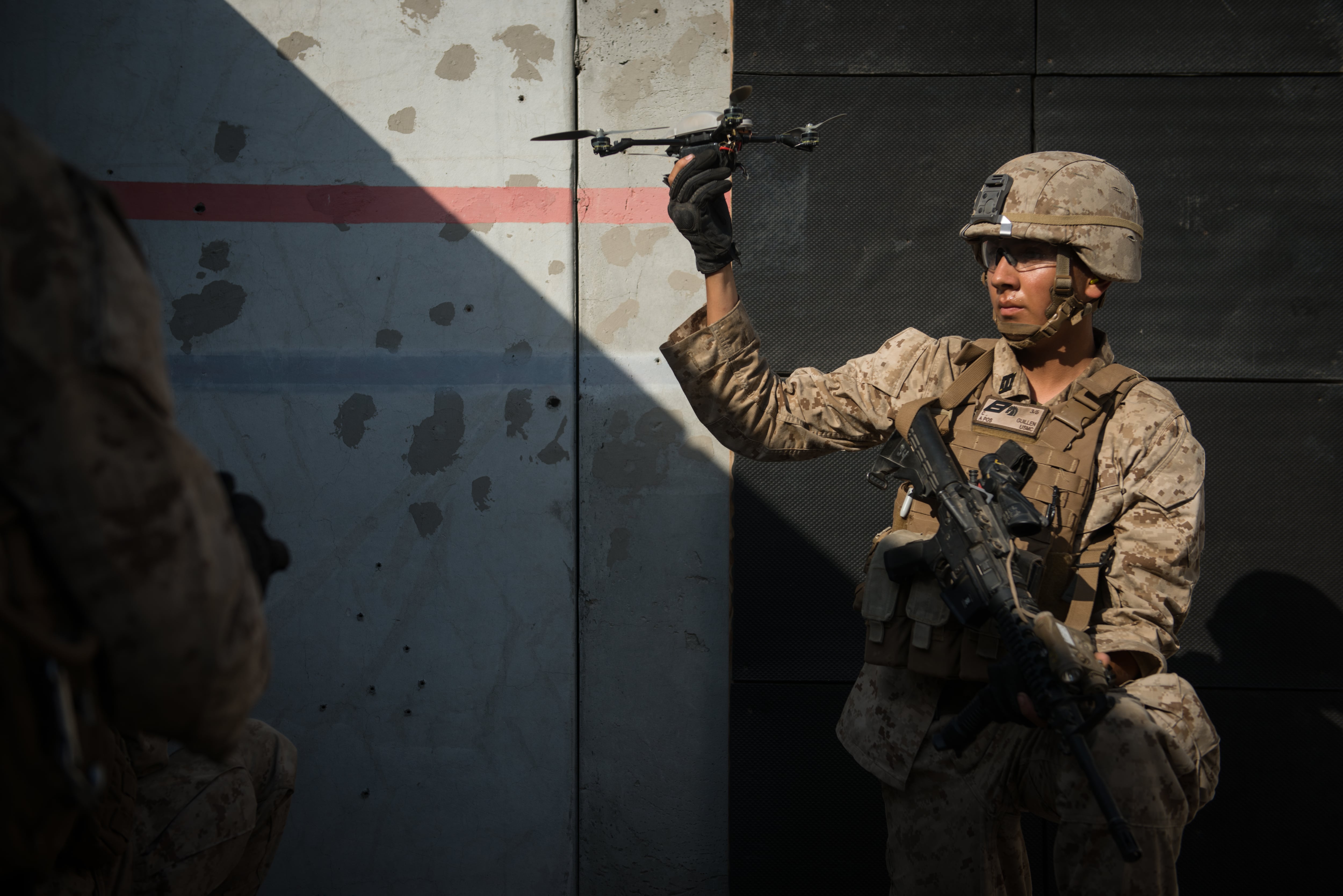Unmanned systems are changing the maneuverability of the Marine Corps. Referencing the newly published Marine Corps Operating Concept, Lt. Gen. Robert Walsh, commanding general of Marine Corps Combat Development Command, said that within the force's combined arms approach to maneuver warfare, the unmanned capability will allow for maneuverability in different ways than witnessed in the 20th century.
Speaking at the Unmanned Systems Defense conference on Oct. 25, Walsh, quoting Marine Corps Commandant Gen. Robert Neller, highlighted the path forward that involves using unmanned systems at all echelons and in all domains, as mastering the man-machine interface offers a revolution in military operations.
This mirrors what Neller has previously said: that every infantry squad could have its own small unmanned aerial device.
Walsh noted that unmanned systems help keep the operational tempo high, and "that’s how we win on today’s modern battlefield," he said.
Unmanned technologies will also allow the Marines to put more mass on the battlefield, he said.
"We’ve been in an era where technology has allowed us to get precision capabilities on very good, solid, exclusive platforms, and we can dominate just about any enemy we see out there within the last 15-20 years," he said. "Now we’re seeing peer competitors grow this type of technology, that we’re going to fall behind if we don’t rapidly change the way we operate."
Elaborating on this notion, Walsh said unmanned systems could allow forces to disperse more, allowing unmanned ground systems or aerial systems to engage enemies or relay information, which would add greater maneuverability and increase the level of deception against adversarial forces.
Walsh also explained that following a recent exercise, Neller directed him to procure four battalions' worth of small, Group 1 UAS. While he said it would be nice to procure these systems across the entire force, he said the technology is changing so rapidly that they want to see how it operates and what comes along next to avoid buying old technology.
Walsh expressed a desire for larger aerial unmanned platforms in the Groups 4 and 5 space, which resemble the Air Force’s MQ-1 Predator and MQ-9 Reaper. He described a Marine Air-Ground Task Force unmanned expeditionary capability for these types for larger platforms.
During congressional testimony in April last year, Lt. Gen. Jon Davis, deputy commandant for aviation for the Marine Corps, said the service is looking for Groups 4 and 5 UAS with "long dwell, long duration, manned-unmanned teaming concepts."
Walsh noted how in the past, the Marines have only used systems Group 3 and below. The value in the larger platforms, he said, is their ability for longer range, greater persistence, and greater payload capacity for weapons and sensors.
Ultimately, he said the service wants capabilities within these platforms that are unique to its missions.
"We’re a maritime force and an expeditionary force," he said, adding that the service will want the capability to land the tech on a ship or a small expeditionary site, and it must be able to operate at sea and at shore.
Mark Pomerleau is a reporter for C4ISRNET, covering information warfare and cyberspace.








